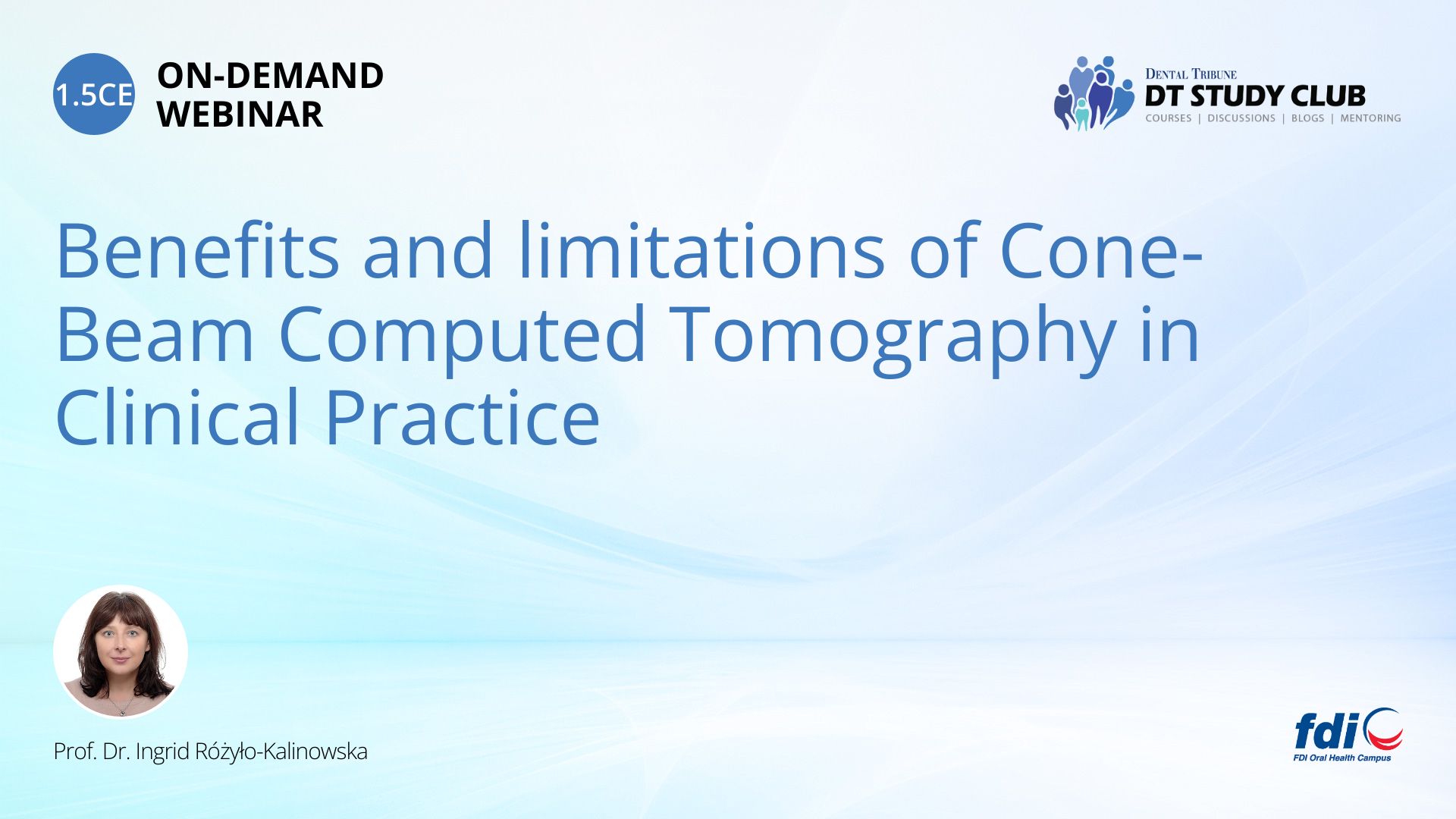Benefits and limitations of Cone-Beam Computed Tomography in Clinical Practice
The planned webinar will provide information on effective doses to human beings derived from CBCT in comparison with other diagnostic imaging procedures based on X-rays as well as potential risks from such exposure to ionising radiation. The necessity of reporting full CBCT volumes will be underlined.
Cone-Beam Computed Tomography (CBCT) is a relatively new method of diagnostic imaging applied among others in clinical practice in dentistry. Although introduced only in the end of the 1990’s, the CBCT technology has quickly developed and became available for general dentists. Despite its popularity it cannot yet be treated as a gold-standard, and justified referral policy must be carried out according with the guidelines and diagnostic imaging algorithms. The aim of the presentation is to discuss evidence-based indications for CBCT in dental practice – both general and specialised. In the lecture there will be demonstrated limitations of CBCT in clinical practice such as dental caries imaging and diagnosis of soft tissue lesions. There will be provided information on effective doses to human beings derived from CBCT in comparison with other diagnostic imaging procedures based on X-rays as well as potential risks from such exposure to ionising radiation. The necessity of reporting full CBCT volumes will be underlined.
Learning objectives:
- To identify evidence-based indications for Cone-Beam Computed Tomography in dental practice
- To demonstrate limitations of CBCT in clinical practice
- To understand potential risk related to exposure to ionising radiation derived from CBCT


 CE Communities
CE Communities


































 English
English












































